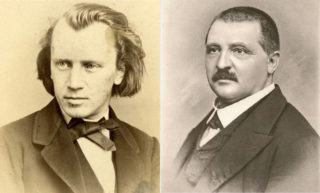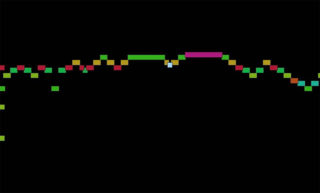Solace for the Soul
Sinfonieorchester Basel
6 and 7 April 2022
MDR-Rundfunkchor
Christina Landshamer, Sopran
Liviu Holender, Bariton
Marek Janowksi, Conductor
Johannes Brahms - Ein deutsches Requiem
When Robert Schumann first met Johannes Brahms in 1853, the latter, a 20-year-old musician, was probably better known as a pianist than a composer. Nonetheless, his first few works revealed so much talent, that his senior colleague felt compelled to launch his career publishing a ravishing article in the Neue Zeitschrift für Musik (New Magazine for Music) that he had co-founded. He wrote that he’d been awaiting someone to be “springing forth like Minerva fully armed from the head of Jove. And he is come, a young blood by whose cradle graces and heroes kept watch. He is called Johannes Brahms.” Brahms still had a long way to go – it was his Ein deutsches Requiem (A German Requiem) that, 15 years later, fully established his name.
Not exactly empathetic by nature, Brahms related to others through music. He therefore felt at home with Schumann and his wife Clara Wieck, one the foremost pianists of her time. Schumann’s suicide attempt in 1954 – he jumped in the Rhine from a bridge in Düsseldorf – and his death in a mental asylum in 1856, left a deep scar.
Brahms grew up in the port city of Hamburg in a household that struggled to make ends meet. His father, a musician himself, exploited Johannes’ talent by forcing him at only thirteen years old to play the piano in dining venues that doubled as brothels for the many sailors. In his excellent Brahms biography, Jan Swafford assumes that handsome Johannes must have witnessed things unsuitable for young people, and may have even been abused. Nonetheless, Brahms held his parents in high esteem throughout his life. His mother’s death in 1865 was the immediate impetus for composing his Requiem. However, the seed for it was already planted in the aftermath of Schumann’s failed suicide attempt.
Ein deutsches Requiem doesn’t follow the pattern of a traditional catholic, Latin requiem mass, but is a personal interpretation in Brahms’ own words and language based on Luther’s Bible and Apocrypha. Being agnostic, he conceived his choir work as a source of solace for those staying behind and a memorial for the dead, rather than a liturgical work. The consoling opening movement testifies to the first (“Selig sind, die da Leid tragen”/“Blessed are they that mourn”), while the final, seventh movement commemorates the dead (“Selig sind die Toten”/“Blessed are the dead”).
The second movement, a funeral sarabande – originally composed as part of an envisioned symphony in response to Schumann’s crisis in the mid-1850s – is propeled by the pulsating drum. Despite moments of near-despair, the second and third movement end on a rather optimistic note (“sorrow and sighing shall flee away” and “no torment shall stir them”).
While the somewhat folksy fourth part praises God’s dwelling places, a solo soprano in the fifth movement depicts the transition from mourning to joy through consolation. The movement was added after the premiere in Bremen Cathedral.
About the sixth movement with its final fugue on verses by Handel, Wagner noted it demonstates that Brahms stood in a long musical tradition while still having his own unique signature.
The last part eventually closes in resignation to the inescapable. No bombast, no drama, just the serene notes on a final selig (blessed). The audience in Bremen Cathedral knew they had witnessed musical history. Schumann’s early words had at last come true.
These English program notes have been published in the magazine of the Sinfonieorchester Basel.









Comments